*The UM150 is no longer available.Try checking out other broadband card reviews.
The UM150 is the 1st cousin of the UM175.
Having identical form factors and are very similar design, it’s been time tested since it’s introduction in 2007. If you think about it, a 2 year track record is pretty strong in the tech realm. It’s especially strong in the telecom arena where phones/devices are tossed out the window every 2 years for the latest and greatest upgrade.
If you’re looking for a no-bones reliable card, the UM150 may just be your bet. Just don’t be like me and break the swivel hinge. While I didn’t have a UM150, the form factor was similar enough to the card I had and I found a way to make it happen. Once you avoid this mishap, you’ll most likely be fine.
In this review, we’ll cover:
1. Aesthetics
2. Cool factor
3. Speed
4. Coverage
5. Official Tech Specs
6. Support Info
7. Drawbacks
8. How much it costs and where to get it
A whole lot like the UM175 but black.
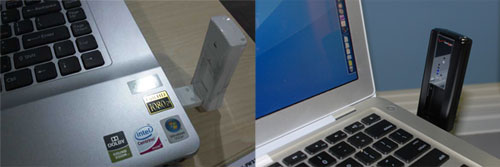
The UM175 (pictured on the left) practically looks like a white replica of the UM150 on the right.
In reality, the UM150 is noticeably larger.
At about the length of a credit card and about half as wide, the UM150 is not exactly a humongous card. Is it the coolest cat on the block? Not really. But if you’re like me, you may end up sticking it in the back of your laptop where you’ll not even realize it’s existence after awhile.
It’s got 4 Gigabytes of internal memory available via a microSD slot. That’s remarkable for a card that’s been on the market this long. If you know it’ll always be on you or with your laptop, it can serve as a backup for vital documents or information you need to get your work done.
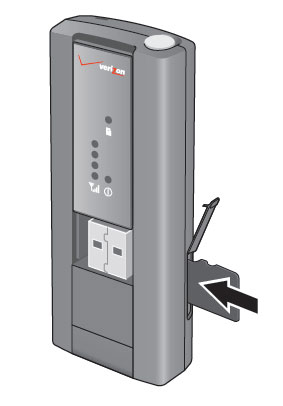
The UM150’s 4GB microSD slot is accessible via a small flap on the right for extra storage.
It’s also got a retractable antenna for improved reception. A definite hope bringer if you live in fringe areas or travel through them a lot. Otherwise, you’re stuck looking for EVDO signal boosters. Luckily, the UM150 does have a jack for the aforementioned boosters. As an extra benefit, the swivel function of the USB port can work wonders for finding that ‘perfect’ antenna spot in low reception areas.
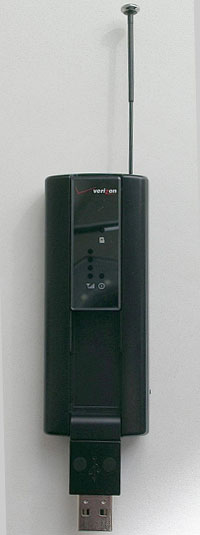
The extended antenna can improve signal. Don’t expect it to work magical wonders though. The makers obviously thought so and included a jack for extenal antenna boosters (popular for users with poor signal in fringe areas).
It’s next feature might be borderline quirky rather than cool.
It ships with a Y-shaped USB extension port if you like your broadband card to sit off by the side. While I lived in a fringe area once I used one such cable to work as a bootleg antenna by bending it to prop higher in the sky.
The results were minuscule to say the least.
The official reason for the extension however, is to draw extra power if one USB port isn’t powerful enough.

The y-shaped USB connection helps the UM150 draw extra power if needed from two USB ports
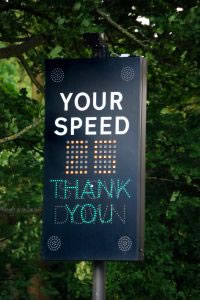
Verizon mobile broadband speed is similar to DSL and about ten times faster than using dialup.
“With a Verizon Mobile Broadband Card, you get average download speeds of 600-1400 Kbps, peaking at 3.1 Mbps, and 350-500 Kbps average upload speeds, peaking at 1.8 Mbps. Similar to DSL, and about ten times faster than using a dial-up modem”
While this is technically true, alot of you tend to ask how fast a specific card will be. While the individual card does not usually affect the speed (so long as it’s EVDO Revision A).
The speed can also vary depending on location. As I explain in Lesson 8: Who’s The Fastest (Mobile Broadband Buyer’s Guide), Sprint has the best speeds overall. For now, they have a double whammy on speed and coverage, two of the biggest concerns mobile broadband users have. Verizon follows closely behind and is actually #1 depending on the market.
A couple real world applications that work well are email, web surfing, sending large attachments, video streaming, music streaming, and online gaming. I’ve personally used my EVDO Rev. A broadband card from Sprint for all of the above. The latency is much better than I would expect for online gaming. From Real-Time Strategies to First Person Shooters, it handles it pretty well.

Verizon’s mobile broadband network rivals Sprint (the largest mobile broadband network). Add the fact that they’re the most reliable and you have a winner. This UM150 runs on Verizon’s Mobile Broadband network.
After some reviewing that I cover in great detail in Lesson 10 of Mobile Broadband Buyer’s Guide, you’ll see how Verizon holds its own in nationwide coverage. For the short sum up, it’s consistently #1 or #2 in nationwide domestic 3G coverage.
If you’re wondering how it’ll fare out internationally, check out our review on International Wireless Broadband. That way, you can check out the specific countries you’d be traveling to.
Small, light and easy to use, the UM150 USB Modem provides high–speed access on our 1x/EV–DO network via VZAccess Manager. It is compatible with devices that support a Type A USB port and comes equipped with a high–performance, retractable antenna and a Y–shaped extension cable for added performance and convenience. In addition, the UM150 serves as a mass storage device with its built–in microSDsm memory slot (4GB+ capacity).
Features:
BroadbandAccess and NationalAccess Compatible
Memory Storage (4GB)
2–way Text Messaging Capable
Rev. A Capable
Included Accessories:
VZAccess Manager™ CD (includes software and device User Guide)
Quick Reference Guide
USB Modem Extension Cable (no warranty)
The UM150 is compatible with Windows XP and Vista (32/64bit). As with most broadband cards, if it supports Vista, it’ll unofficially support Windows 7. If not, you could try working with the new Windows XP virtual mode in Windows 7 to get it working. It also works with Mac OSX 10.3.9 and up through 10.5 Leopard.
So what do you do if you already own the broadband card and you’ve got problems?
A couple things.
You could check out the carrier’s software support page, try the frequently asked questions, or read the user manual. Don’t know where to find that stuff?
I’ve got your back:
If you’re working in closed confined spaces (i.e. airplane, car, train, bus or boat) and you have a clumsy moment, you could break it. I managed this feat on my bed:
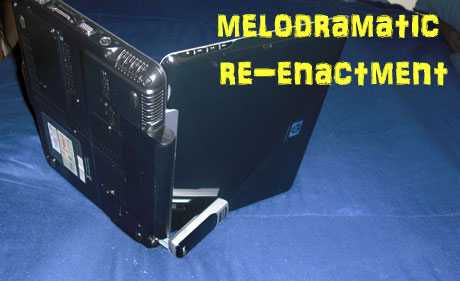
If you like working in crazy positions like me, you run the risk of breaking the UM150 or any broadband card with a similar form factor. This is how I broke mine. Don’t let it happen to you. I forgot I had mine back there.
Outside of that this card will be good for about another 2 years. In that time you will need a new card to upgrade to LTE that Verizon plans to bring on stream. Is this a huge drawback? Nah, they’ll be offering incentives to ring you back in after your contract’s up. It only matters if you’re the type that likes to stick with something for a long time. If you are, you’ll probably want to upgrade. This time it’ll be worth it in terms of increased speed, better coverage and overall card functionality.
But like I said, you can pick it up now and make a nice buck or two. Which brings me to…
The UM150 is free on the spot and you can make $100 in mail-in rebates (at the time of this review).
Definitely not a bad deal. That’s almost 2 months of service free in addition to a free device. Not too shabby. This broadband card is good for those who don’t need to many frills but rather something reliable with a track record.
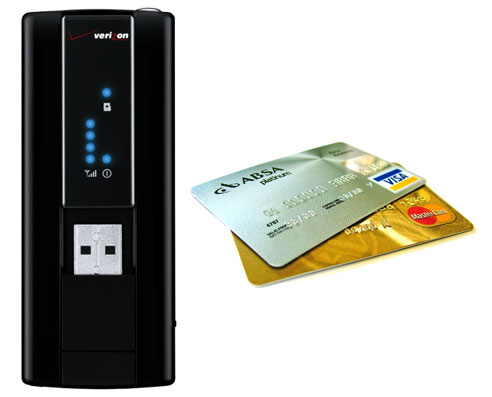
Pick it up for free and make $100
(at the time of this review)
But I’m still not sure on mobile broadband…

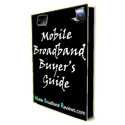
Still have questions? Sign up for Mobile Broadband Buyer’s Guide. If that’s you, then sign up for the free “Mobile Broadband Buyer’s Guide“.
It’s like your pre-marital counselor and prenuptial agreement all in one. It’ll save you from any future heartache and checkbook punches that might come your way.
It’s been designed to explain in short, detailed lessons what most people don’t know about mobile broadband.
.
Need more info? Check out the rest of the mobile broadband reviews.

